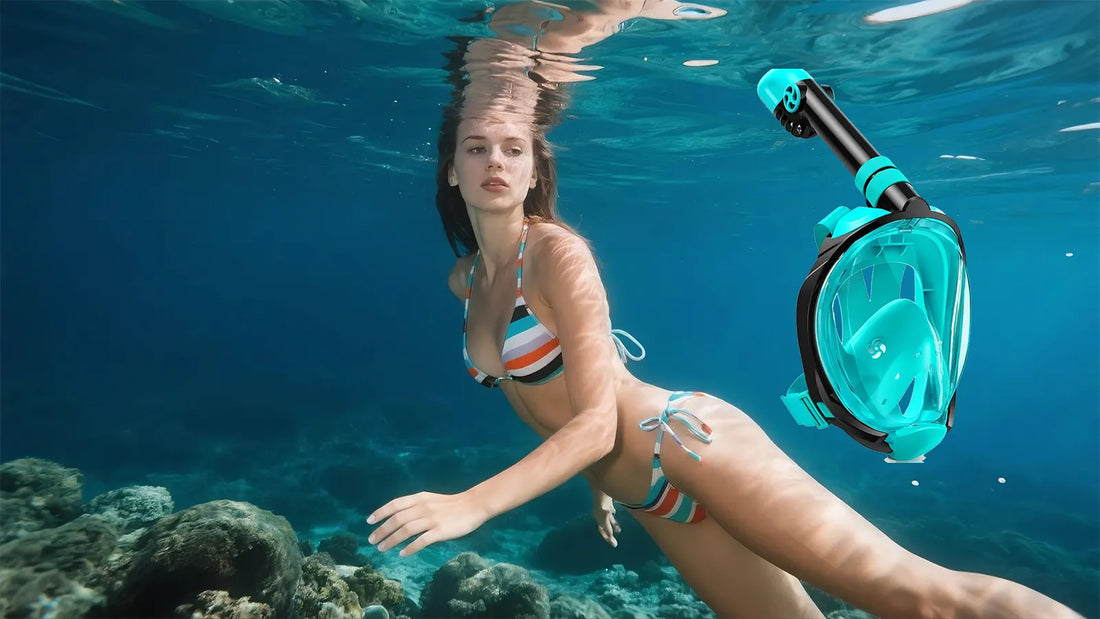Snorkeling is a thrilling way to explore the underwater world, offering a glimpse into vibrant marine life and stunning coral reefs. But how deep can you safely go while snorkeling? This question is crucial for both beginners and experienced snorkelers to ensure a safe and enjoyable experience. Let's dive into the details of snorkeling depth and what you need to know before taking the plunge.
Understanding Snorkeling Depth
Snorkeling is typically a surface activity, allowing you to float and observe marine life without the need for heavy equipment. The depth you can reach while snorkeling depends on several factors, including your swimming ability, breath-holding capacity, and the equipment you use. On average, snorkelers can comfortably explore depths of up to 10 feet (3 meters) without any special training. However, some experienced snorkelers may venture deeper, reaching depths of 20 feet (6 meters) or more.
Factors Influencing Snorkeling Depth
Several factors play a role in determining how deep you can snorkel. These include:
- Breath-Holding Ability: The longer you can hold your breath, the deeper you can explore. However, it's essential to avoid pushing your limits to prevent risks like shallow water blackout.
- Swimming Skills: Strong swimming skills allow you to navigate deeper waters more confidently and safely.
- Equipment: While basic snorkeling gear includes a mask, snorkel, and fins, some snorkelers use additional equipment like weight belts to help them dive deeper.
- Water Conditions: Calm, clear waters are ideal for deeper snorkeling, while rough or murky conditions can make it more challenging and risky.
Safety Tips for Snorkeling at Depth
Safety should always be your top priority when snorkeling, especially when exploring greater depths. Here are some essential tips to keep in mind:
- Know Your Limits: Avoid pushing yourself beyond your comfort zone. If you're new to snorkeling, stick to shallower depths until you gain more experience.
- Practice Breath Control: Before attempting deeper dives, practice breath-holding techniques in a controlled environment, such as a swimming pool.
- Use Proper Equipment: Ensure your mask, snorkel, and fins fit well and are in good condition. Consider using a weight belt if you plan to dive deeper, but be cautious not to overdo it.
- Snorkel with a Buddy: Always snorkel with a partner, especially when venturing into deeper waters. This ensures someone is there to assist you in case of an emergency.
- Be Aware of Your Surroundings: Pay attention to water currents, marine life, and other potential hazards. Avoid touching or disturbing marine creatures to prevent injuries.
The Wonders of Deep Snorkeling
Exploring deeper waters while snorkeling opens up a whole new world of marine wonders. From colorful coral reefs to schools of tropical fish, the underwater realm is teeming with life and beauty. Deeper snorkeling also allows you to encounter larger marine species, such as sea turtles, rays, and even dolphins. However, it's essential to approach these encounters with respect and caution to ensure both your safety and the well-being of the marine life.
Challenges of Deep Snorkeling
While deep snorkeling can be incredibly rewarding, it also comes with its own set of challenges. These include:
- Increased Pressure: As you descend deeper, the water pressure increases, which can affect your ears and sinuses. Equalizing pressure by pinching your nose and gently blowing can help alleviate discomfort.
- Limited Visibility: Deeper waters may have reduced visibility, making it harder to navigate and spot marine life.
- Fatigue: Diving deeper requires more energy and can lead to fatigue more quickly. Take breaks as needed and avoid overexertion.
- Risk of Decompression Sickness: While rare in snorkeling, rapid ascents from deeper depths can increase the risk of decompression sickness. Always ascend slowly and take your time.
Preparing for a Deep Snorkeling Adventure
If you're ready to take your snorkeling to the next level, proper preparation is key. Here are some steps to help you get started:
- Take a Snorkeling Course: Consider enrolling in a snorkeling or freediving course to learn advanced techniques and safety practices.
- Build Your Fitness: Improve your swimming and breath-holding abilities through regular practice and exercise.
- Choose the Right Location: Research snorkeling spots known for their clear waters and diverse marine life. Some locations are better suited for deeper snorkeling than others.
- Check Weather Conditions: Plan your snorkeling trip on a day with calm seas and good visibility to ensure a safer and more enjoyable experience.
Snorkeling how deep is a question that opens the door to endless underwater adventures. Whether you're a beginner or an experienced snorkeler, understanding the factors that influence depth and prioritizing safety will help you make the most of your time beneath the waves. So grab your gear, dive in, and discover the breathtaking beauty that lies just below the surface.

